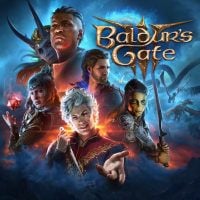Baldurs Gate 3: Graphics settings
Last update:
This section focuses on the graphics settings available in Baldur's Gate 3. You will learn how they affect the game's performance and the quality of the graphics, and which ones can be modified to improve the game's smoothness.
Baldur's Gate 3 allows the player to customize many graphics options, such as the overall quality, lighting, shadows, and post-processing effects. This range of graphic options helps a lot in making the game run smoother without losing too much on the quality of the graphics. If you have weaker hardware, it is worth knowing which graphics options in Baldur's Gate 3 can be modified and which ones can be turned off completely.
Graphic options - how to improve the performance?
Below is a complete list of the graphic options available in Baldur's Gate 3 along with an explanation of what they are for and whether they can be turned off or modified to improve the game's quality and performance.
- Resolution - sets the resolution of Baldur's Gate 3. Set the native resolution of your monitor, such as 1920x1080, to get a satisfactory image quality. Setting a lower resolution will blur the image;
- Display mode - you can choose between playing in the full screen or in the window;
- V-sync - this option limits the amount of FPS displayed to a value that prevents the image tearing effect and is related to the screen refresh rate;
- Max FPS - an option that specifies the maximum frame rate (FPS) displayed during a game. For example, if you have a monitor that has 144Hz refresh rate, you can set the FPS limit to 144;
- General preset - you can quickly choose the quality of the displayed graphics between low, medium, high and ultra;
- Model quality - this option is responsible for setting the graphic details of models. If you have a good PC, you can easily set the value to high. People with weaker graphics cards will have to choose between low and medium settings;
- Instance distance - determines the amount of detail of objects that you can see in the distance. On the highest settings, objects will appear sharper and have better quality even when seen from further away;
- Texture quality - this option is responsible for the graphics details. If you have a good PC, you can easily set the value to high. People with weaker graphics cards will have to choose between low and medium settings;
- Texture filtering - the option responsible for the texture filtering method. The higher the value, the more resources your graphics card will use;
- Lighting quality - this option affects the quality of lighting and thus gives the impression of greater realism. Any graphic option associated with lighting will put a strain on the graphics card;
- Shadows on/off - this option is responsible for displaying shadows of objects. When it is enabled, you will put more strain on the graphics card. Turn this option off to improve the performance of weaker graphics cards.
- Light shadows on/off - this option is responsible for displaying shadows created by local light sources such as bonfires and lamps. Turn this option off to improve the performance of weaker graphics cards.
- Shadow detail - this option is responsible for rendering shadows of objects. The higher the resolution and more shadows, the more resources the graphics card will need. Set the Shadow detail to low to improve the performance of weaker graphics cards.
- Anti-Aliasing – this option is responsible for smoothing the edges around the in-game objects. Anti-Aliasing, unfortunately, has some drawbacks, namely blurring the image slightly so that it does not seem sharp and jagged;
- Ambient Occlusion enable/disable - a shading method that increases the sense of realism but can also cause a significant drop in performance. Lower or disable this option to improve the performance of weaker graphics cards.
- Depth of field - changes the intensity of the blur effect on objects outside the camera's center of focus. You can turn this option off and enjoy sharper graphics;
- God rays on/off - adds a sunlight effect that increases the sense of realism, but also puts a strain on the graphics card;
- Bloom on/off - enhances the quality of light effects. For example, when a character goes towards the sun, sunlight will shine much more strongly on the monitor screen and cause a blinding effect;
- Subsurface scattering - it simulates the effect of light scattering beneath the surface of objects to achieve a more realistic effect. If you have a weaker graphics card, you should disable this option.
- Baldurs Gate 3 Guide, Walkthrough
- Baldur's Gate 3: Game guide
- Baldur's Gate 3: Appendix
- Baldur's Gate 3: Adult Content in BG3
- Baldurs Gate 3: Release date
- Baldurs Gate 3: PC system requirements
- Baldurs Garte 3: Keybinds/PC controls - keyboard and mouse
- Baldurs Gate 3: PC controls - gamepad
- Baldurs Gate 3: Graphics settings
- Baldurs Gate 3: Which to choose - Vulkan or DX11?
- Baldur's Gate 3: Can you transfer save from the early access?
- Baldur's Gate 3: Co-op
- Baldur's Gate 3: Language versions
- Baldurs Gate 3: PS5 and Xbox Series X versions
- Baldur's Gate 3: Appendix
- Baldur's Gate 3: Game guide
You are not permitted to copy any image, text or info from this page. This site is not associated with and/or endorsed by the developers and the publishers. All logos and images are copyrighted by their respective owners.
Copyright © 2000 - 2025 Webedia Polska SA for gamepressure.com, unofficial game guides, walkthroughs, secrets, game tips, maps & strategies for top games.
